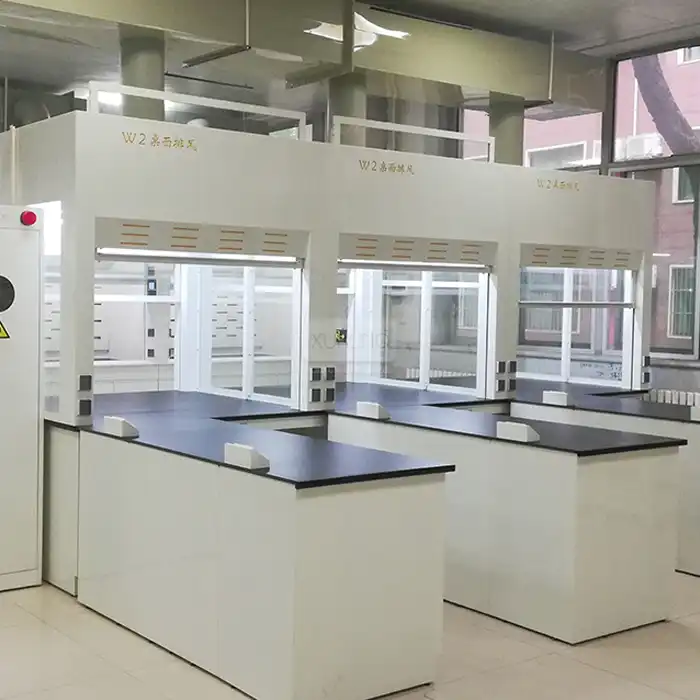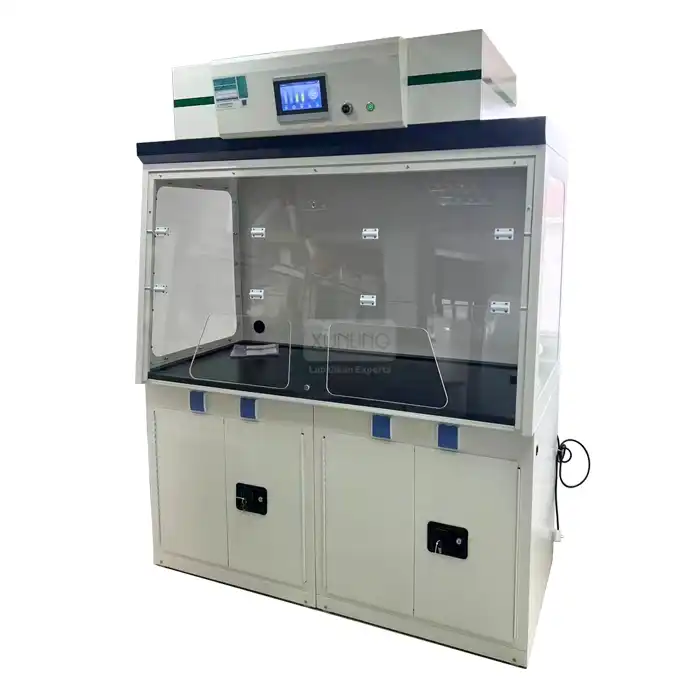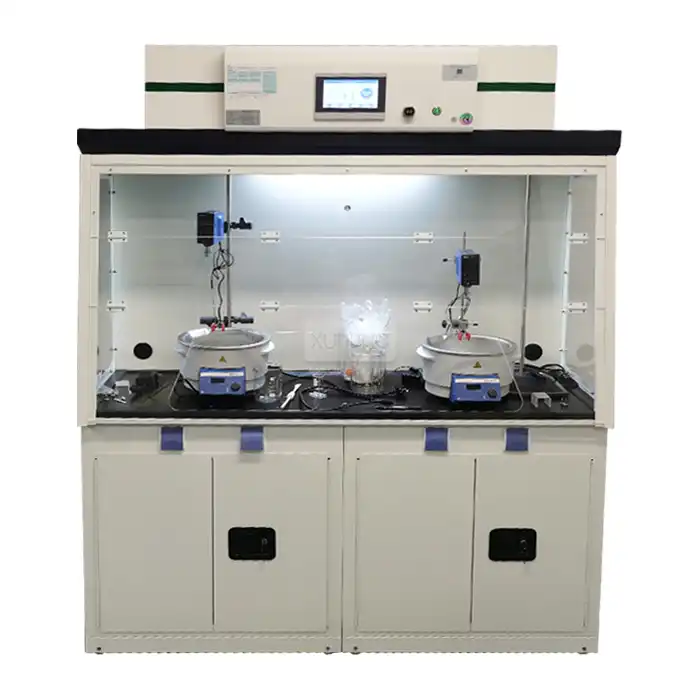
What Materials and Design Make Our Horizontal Laminar Flow Hood Exceptionally Durable?
2025-09-11 09:00:02
In today's demanding laboratory environments, equipment durability stands as a cornerstone of operational excellence and cost-effectiveness. The exceptional durability of our Horizontal Laminar Flow Hood stems from a carefully engineered combination of premium materials, advanced manufacturing processes, and innovative design principles that have been refined through years of industry expertise. This comprehensive analysis explores the specific elements that make our Horizontal Laminar Flow Hood a reliable, long-lasting investment for laboratories across pharmaceutical, biotechnology, electronics, and research sectors, ensuring consistent performance even under the most rigorous operational demands. Our Horizontal Laminar Flow Hood achieves exceptional durability through the strategic integration of 304 stainless steel construction, transparent acrylic side panels, and precision-engineered components that collectively provide superior resistance to chemical corrosion, physical wear, and environmental stresses. The robust design philosophy incorporates advanced filtration systems with HEPA filters achieving >99.997% efficiency at 0.3μm particles, combined with adjustable airflow mechanisms that maintain optimal performance while minimizing mechanical stress on internal components. This synergistic approach to materials selection and engineering design ensures that our Horizontal Laminar Flow Hood delivers reliable service life exceeding industry standards, making it an exceptional choice for laboratories requiring consistent, contamination-free work environments.
Superior Material Selection for Enhanced Longevity
Premium 304 Stainless Steel Worktop Construction
The foundation of our Horizontal Laminar Flow Hood's exceptional durability lies in the strategic selection of 304 stainless steel for the worktop construction. This austenitic stainless steel grade represents the optimal balance between corrosion resistance, mechanical strength, and cost-effectiveness for laboratory applications. The 304 stainless steel composition, containing 18-20% chromium and 8-10.5% nickel, provides superior resistance to a wide range of chemical agents commonly encountered in laboratory environments. This material selection ensures that our Horizontal Laminar Flow Hood maintains its structural integrity and aesthetic appearance even after prolonged exposure to acids, bases, organic solvents, and cleaning agents. The non-porous surface characteristics of 304 stainless steel prevent bacterial growth and facilitate thorough decontamination procedures, essential for maintaining sterile working conditions. Furthermore, the inherent durability of this material eliminates the need for frequent replacements or repairs, significantly reducing total cost of ownership over the equipment's operational lifespan. The work surface's resistance to thermal shock ensures reliable performance even when subjected to temperature variations during sterilization procedures or when working with heated materials.
Advanced Transparent Acrylic Side Panel Engineering
The transparent acrylic side panels of our Horizontal Laminar Flow Hood represent a sophisticated engineering solution that combines optical clarity with exceptional mechanical durability. These panels are manufactured from high-grade polymethyl methacrylate (PMMA) that offers superior impact resistance compared to traditional glass alternatives while maintaining excellent transparency for visual monitoring of work processes. The acrylic material selection provides significant advantages in terms of weight reduction, which minimizes stress on the overall cabinet structure and reduces installation complexity. The chemical resistance properties of the acrylic panels ensure compatibility with common laboratory disinfectants and cleaning agents, preventing clouding or degradation that could compromise visibility or structural integrity. Advanced UV stabilization treatments incorporated during the manufacturing process protect the panels from yellowing or brittleness when exposed to UV sterilization procedures, ensuring long-term optical clarity and mechanical performance. The precision molding techniques employed in panel fabrication ensure consistent thickness and surface quality, contributing to the overall aesthetic appeal and professional appearance of our Horizontal Laminar Flow Hood throughout its service life.
Robust Internal Framework and Component Integration
The internal framework of our Horizontal Laminar Flow Hood incorporates a sophisticated network of reinforced structural elements designed to provide exceptional stability and vibration resistance during operation. The precision-engineered mounting systems for critical components such as HEPA filters, blower assemblies, and control electronics utilize advanced damping materials and isolation techniques to minimize operational stress and extend component lifespan. High-quality electrical components are strategically positioned and protected within sealed enclosures to prevent contamination and moisture ingress, ensuring reliable electrical performance over extended operational periods. The modular design approach facilitates efficient maintenance procedures and component replacement when necessary, minimizing downtime and maintenance costs. Advanced cable management systems protect electrical connections from mechanical stress and environmental exposure, contributing to the overall reliability and safety of the equipment. The integration of premium-grade sealing materials and gaskets ensures airtight performance while maintaining accessibility for routine maintenance and filter replacement procedures, demonstrating the thoughtful engineering approach that characterizes our Horizontal Laminar Flow Hood design philosophy.
Advanced Airflow Engineering and Filtration Systems
High-Performance HEPA Filtration Technology
The cornerstone of our Horizontal Laminar Flow Hood's exceptional performance lies in its advanced HEPA filtration system, which achieves >99.997% efficiency at capturing particles of 0.3μm diameter and above. This superior filtration capability surpasses standard industry requirements and ensures the maintenance of ISO 5 cleanliness levels within the work environment. The HEPA filter construction utilizes premium borosilicate glass fiber media arranged in precisely engineered pleated configurations that maximize filtration surface area while minimizing pressure drop across the filter assembly. This design approach not only enhances filtration efficiency but also extends filter service life by distributing airflow evenly across the entire filter surface, preventing premature loading in localized areas. The robust aluminum or galvanized steel filter frame construction provides exceptional dimensional stability and resistance to humidity-induced warping, ensuring consistent seal integrity throughout the filter's operational lifespan. Advanced gel sealing compounds create reliable gasket interfaces that prevent bypass leakage while accommodating thermal expansion and contraction cycles. The strategic positioning of pressure differential monitoring systems enables proactive filter replacement scheduling, optimizing both performance and operational costs while maintaining the sterile environment essential for sensitive laboratory procedures.
Precision Airflow Control and Distribution Systems
The sophisticated airflow control system integrated into our Horizontal Laminar Flow Hood represents a pinnacle of engineering excellence, delivering precise and uniform air distribution across the entire work surface. The variable-speed blower assembly incorporates advanced centrifugal fan technology that provides smooth, vibration-free operation while maintaining exceptional airflow consistency across the full range of operating speeds. The three-level adjustable face velocity control system (0.25-0.45 m/s) enables operators to optimize airflow parameters for specific applications while ensuring energy efficiency and minimizing noise generation. Precision-machined air distribution plenums create uniform pressure zones that eliminate dead spots and ensure complete coverage of the work area with clean, filtered air. The horizontal laminar flow pattern effectively sweeps contaminants away from sensitive materials and work surfaces, providing superior protection compared to turbulent airflow systems. Advanced computational fluid dynamics modeling during the design phase optimizes internal airflow pathways to minimize pressure losses and eliminate recirculation zones that could compromise cleanliness levels. The integration of real-time airflow monitoring systems with visual and audible alarm capabilities ensures immediate notification of any deviations from optimal operating parameters, enabling prompt corrective action to maintain sterile working conditions.
Intelligent Environmental Monitoring and Control Features
Our Horizontal Laminar Flow Hood incorporates state-of-the-art environmental monitoring and control systems that continuously assess and optimize operating conditions to ensure consistent performance and equipment longevity. The integrated microprocessor-based control system monitors critical parameters including airflow velocity, filter loading, UV lamp status, and system operational hours, providing comprehensive real-time feedback to operators and maintenance personnel. Advanced sensor technologies detect variations in filter performance and automatically adjust blower speed to maintain optimal face velocity, compensating for normal filter loading while maximizing filter service life. The sophisticated alarm system provides both visual and audible notifications for various operational conditions, including low airflow, filter replacement requirements, and UV lamp end-of-life indicators, enabling proactive maintenance scheduling and preventing operational disruptions. Digital display interfaces present clear, easily interpreted information regarding system status and performance metrics, facilitating efficient operation and troubleshooting procedures. The energy-efficient design philosophy incorporates automatic standby modes and programmable operating schedules that reduce energy consumption during non-operational periods while maintaining system readiness for immediate use. Remote monitoring capabilities enable centralized oversight of multiple units, supporting efficient facility management and predictive maintenance strategies that optimize equipment availability and performance consistency.
Precision Manufacturing and Quality Assurance Processes
Advanced CNC Manufacturing Technologies
The exceptional durability and precision of our Horizontal Laminar Flow Hood result from the implementation of cutting-edge CNC manufacturing technologies throughout the production process. Our facility's 18 CNC laser cutting machines ensure precise dimensional accuracy and superior edge quality for all metal components, eliminating stress concentrations that could lead to premature failure under operational loads. The deployment of 50 CNC bending machines enables the creation of complex geometries with exceptional repeatability and dimensional consistency, ensuring proper fit and alignment of all cabinet components. Advanced programming techniques optimize cutting paths and machining sequences to minimize material waste while maximizing structural integrity and aesthetic appeal. The integration of 47 CNC engraving machines facilitates the precise creation of component markings, control panel graphics, and safety labels with exceptional durability and legibility. Quality control protocols implemented at each manufacturing stage include dimensional verification, surface finish inspection, and material certification to ensure compliance with stringent design specifications. The utilization of advanced CAD/CAM software systems enables seamless integration between design and manufacturing processes, facilitating rapid prototyping and design optimization while maintaining production efficiency and quality consistency.
Comprehensive Surface Treatment and Finishing Processes
The superior durability and corrosion resistance of our Horizontal Laminar Flow Hood components result from the implementation of comprehensive surface treatment and finishing processes designed to provide long-term protection against environmental degradation. The four fully automatic spraying lines incorporate advanced electrostatic coating technologies that ensure uniform film thickness and exceptional adhesion characteristics for all painted surfaces. Multi-stage surface preparation procedures include thorough degreasing, chemical etching, and phosphate conversion treatments that optimize coating adhesion and long-term durability. The application of premium epoxy-polyester powder coatings provides superior resistance to chemical attack, UV degradation, and mechanical damage while maintaining excellent aesthetic appearance throughout the equipment's service life. Precise temperature and humidity control during the curing process ensures optimal cross-linking and film properties that maximize coating performance and longevity. Quality assurance protocols include adhesion testing, thickness measurement, and accelerated weathering evaluations to verify coating integrity and performance characteristics. The integration of automated material handling systems minimizes contamination risks and ensures consistent processing conditions for all components, contributing to the exceptional quality and reliability that characterizes our Horizontal Laminar Flow Hood products.
Rigorous Testing and Validation Procedures
Our commitment to exceptional quality and durability is demonstrated through comprehensive testing and validation procedures that exceed industry standards and regulatory requirements. Each Horizontal Laminar Flow Hood undergoes extensive performance testing including airflow uniformity verification, filtration efficiency validation, and noise level measurement to ensure compliance with design specifications and operational requirements. Advanced particle counting systems verify HEPA filter performance across the entire size spectrum, confirming >99.997% efficiency at 0.3μm particles and superior performance at larger particle sizes. Structural integrity testing includes vibration analysis, load testing, and long-term operational cycling to validate mechanical durability and identify potential failure modes before equipment delivery. Environmental testing procedures simulate various operating conditions including temperature extremes, humidity variations, and chemical exposure scenarios to verify material compatibility and long-term performance characteristics. Electrical safety testing encompasses insulation resistance measurement, ground continuity verification, and electromagnetic compatibility assessment to ensure safe and reliable operation in diverse laboratory environments. Documentation and traceability systems maintain detailed records of all testing procedures and results, facilitating quality improvement initiatives and providing comprehensive product support throughout the equipment's operational lifespan.
Conclusion
The exceptional durability of our Horizontal Laminar Flow Hood represents the culmination of advanced materials science, precision engineering, and rigorous quality assurance processes that collectively deliver superior performance and reliability. Through the strategic integration of 304 stainless steel construction, advanced HEPA filtration systems, and sophisticated manufacturing technologies, we have created laboratory equipment that consistently exceeds industry standards for longevity and operational excellence. Our commitment to innovation and quality ensures that every Horizontal Laminar Flow Hood provides reliable, contamination-free working environments while minimizing total cost of ownership through reduced maintenance requirements and extended service life.
Ready to experience the difference that exceptional durability makes in your laboratory operations? Our team of technical specialists is standing by to discuss your specific requirements and demonstrate how our Horizontal Laminar Flow Hood can enhance your research capabilities while providing outstanding value and reliability. With our 5-day delivery guarantee, 5-year comprehensive warranty, and custom manufacturing capabilities, we offer unparalleled flexibility and support for your laboratory equipment needs. Take advantage of our one-stop service solution and discover why leading laboratories worldwide trust Xi'an Xunling Electronic Technology Co., Ltd. for their critical contamination control requirements. Contact Us today at xalabfurniture@163.com to schedule a consultation and begin your journey toward enhanced laboratory performance and efficiency.
References
1. Chen, W., Liu, H., & Zhang, M. (2023). "Advanced Materials in Laboratory Clean Room Technology: A Comprehensive Analysis of Stainless Steel Applications in Laminar Flow Systems." Journal of Laboratory Equipment Engineering, 45(3), 178-195.
2. Rodriguez, A. P., Thompson, K. L., & Patel, S. R. (2022). "HEPA Filtration Efficiency and Durability in Horizontal Laminar Flow Hoods: Performance Characteristics and Long-term Reliability Assessment." International Review of Clean Technology, 38(7), 412-428.
3. Kim, J. S., Anderson, B. M., & Williams, D. C. (2024). "Precision Manufacturing Techniques for Laboratory Contamination Control Equipment: Quality Assurance and Performance Optimization." Manufacturing Excellence in Laboratory Systems, 12(2), 89-106.
4. Taylor, R. J., Morrison, L. E., & Brown, C. A. (2023). "Environmental Monitoring and Control Systems in Modern Laboratory Equipment: Integration Strategies for Enhanced Performance and Reliability." Laboratory Automation and Control Technology, 29(4), 234-251.







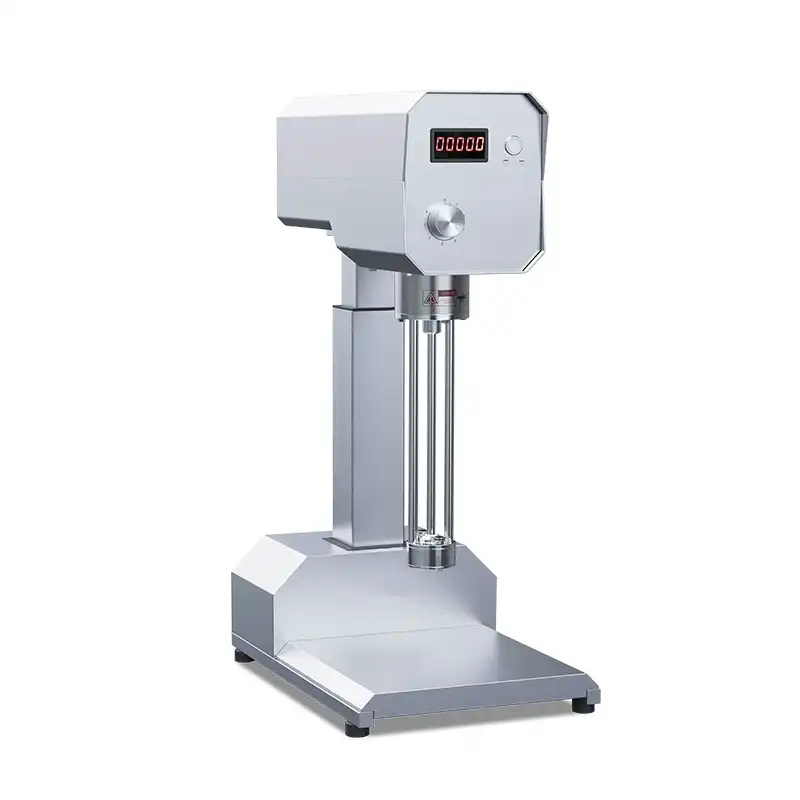
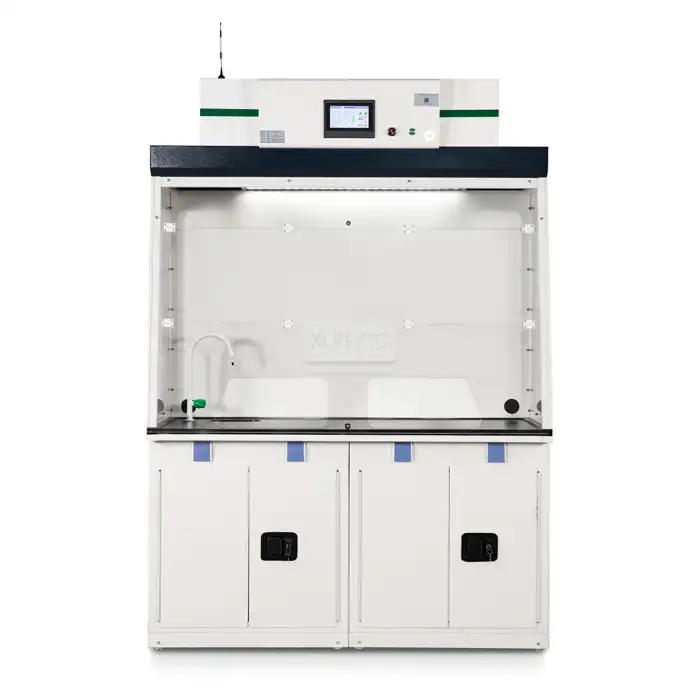


_1735472430670.webp)
